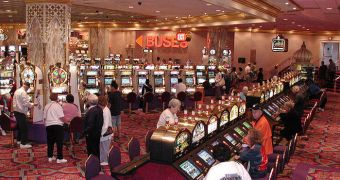Investigators at the Columbia University Business School, led by psychologist Michel Tuan, recently managed to discovery why people tend to spend more money while they are relaxed. The findings provide some insight into why new-generation casinos are so different from older ones.
The change is visible in Las Vegas above all other places. Instead of low ceilings, hidden line of sights, no clocks and claustrophobia-inducing setups, newer constructions are built so that gamblers can relax inside. As a side note, the latter make more money.
For many years, casino owners have struggled to construct the floors of their money-making enterprises according to precise specifications, meant to confuse people, disorient them, and make them uneasy. The thinking was that these measures would boost revenues by keeping more people playing.
The latest generation of casinos is built with high ceilings and a straightforward layout that clearly indicates where the exits are. Marble, floral arrangements and soothing music take the place of the busy chatter and mechanical noises of older casinos.
The reason why this change occurred is that people tend to spend more when they are comfortable in a relaxed, pleasant environment. In addition, psychologists say that these setups encourage players to take irrational risks on games of chance, Wired reports.
Pham's team provided an explanation for why this happens in a paper published in the latest issue of the Journal of Marketing Research. Even when accounting for emotional states, relaxed people tend to spend more money in a more reckless manner than their peers who are stressed or uncomfortable.
The study also suggests that this is why luxury retail stores favor an open design, with soothing music, large empty space filled with comfortable chairs and so on. All of these factors contribute to making the customers feel at ease, even if the stores spend a fortune on renting a space they do not fully use.
From this perspective, the goal of shop owners is to lull as many people as possible into spending as much as possible in their stores. If they would create labyrinthine designs, obscuring products after numerous corners and niches, they would not really succeed in selling too much.

 14 DAY TRIAL //
14 DAY TRIAL //